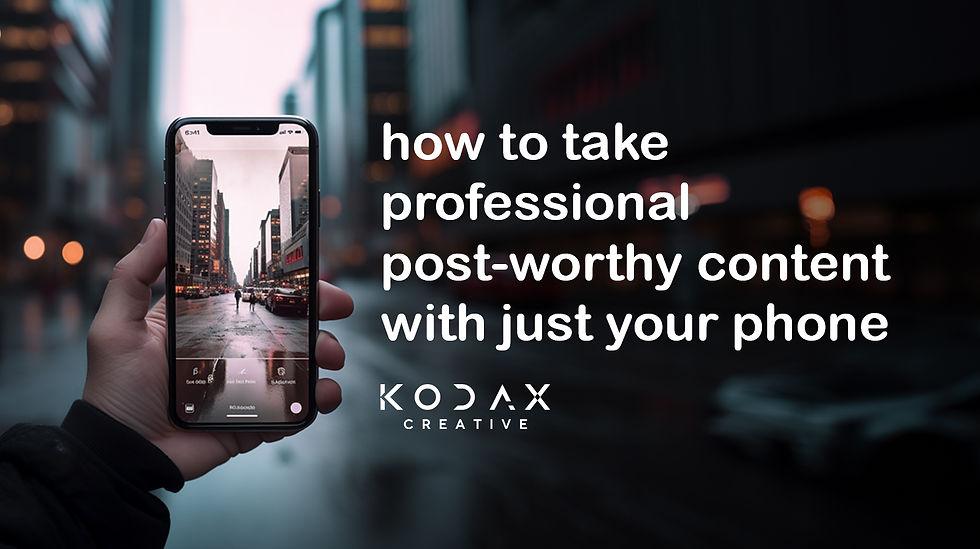Is AI content really worth your time as a brand?
- Derry Ainsworth
- Jan 22, 2024
- 2 min read

In recent years, artificial intelligence (AI) has made significant strides in the field of creative arts, including generating artwork. With the growing popularity of social media platforms, brands are increasingly considering AI-generated artwork as a means of engaging with their audience. However, like any emerging technology, there are both pros and cons to using AI artwork as social media content for brands. This article explores the advantages and disadvantages of incorporating AI-generated art into brand marketing strategies.
Pros:
Unique and Eye-Catching Content:
AI-generated artwork offers brands the opportunity to create visually stunning and unique content that can capture the attention of social media users. The algorithms behind AI can produce innovative and unconventional designs, enabling brands to stand out in a crowded digital landscape.

Cost and Time Efficiency:
Creating original artwork can be time-consuming and expensive. AI artwork, on the other hand, can be generated quickly and at a fraction of the cost of hiring human artists. This makes it an attractive option for brands with limited resources or tight deadlines.
Consistency:
AI-generated artwork can provide a consistent visual identity for a brand across different social media platforms. The algorithms can be programmed to adhere to specific brand guidelines, ensuring a cohesive and recognizable aesthetic that resonates with the target audience.
Experimentation and Exploration:
AI art allows brands to experiment with different styles, colors, and compositions without the limitations of traditional artistic techniques. This freedom can spark creativity and enable brands to explore new visual approaches that align with their brand image and message.

Cons:
Lack of Human Touch:
One of the main drawbacks of AI-generated artwork is the absence of human touch. Art created by humans often carries an emotional and personal element that can resonate deeply with viewers. AI artwork, while visually appealing, may lack the depth and emotional connection that human-created art can provide.
Ethical Concerns and Authenticity:
AI artwork raises ethical questions regarding intellectual property and authenticity. Since AI algorithms are trained on existing artwork, there is a risk of inadvertently plagiarizing or infringing upon copyrighted material. It is crucial for brands to ensure that the AI-generated content they use is original and respects the rights of artists.

Unpredictability and Quality Control:
While AI algorithms can produce impressive results, they can also be unpredictable. There is a risk that the generated artwork may not meet the desired quality standards or fail to resonate with the intended audience. Brands should exercise caution and conduct thorough quality control to avoid potential missteps.
Disconnect from Brand Identity:
AI-generated artwork might not always align perfectly with a brand's identity or message. The algorithms may produce artwork that contradicts the brand's values or fails to communicate the intended narrative. Brands need to carefully evaluate whether AI-generated content is a suitable fit for their specific brand identity.
Conclusion:
AI artwork presents both advantages and disadvantages when used as social media content for brands. The unique and eye-catching nature of AI-generated art can help brands attract attention and save time and costs. However, brands should also consider the lack of human touch, ethical concerns, quality control, and potential disconnect from brand identity. Ultimately, the decision to utilize AI-generated art should be made after careful consideration of the brand's objectives, audience, and values.
Get in touch today to discuss our AI content services and how they could help elevate your engagement:




Comments